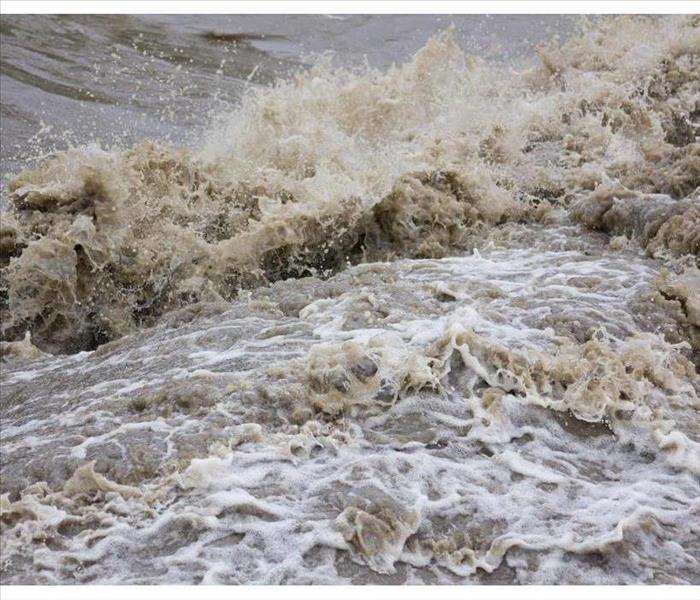The Different Types of Floods
12/16/2022 (Permalink)
The 4 Different Types of Floods
Floods are one of the most devastating natural disasters in the world. Unfortunately, they can be hard to prevent. A flood is a natural disaster that occurs when an area is overwhelmed by water. It can be caused by any number of factors, including heavy rain, high tides, and extreme weather. Floods can cause damage to property and infrastructure. They can also cause ecological damage, such as soil erosion and pollution of water sources.
Flash Floods
Flash floods are common in arid and semi-arid regions, where heavy rainfall can quickly overwhelm the capacity of rivers to transport water away from their drainage basin. Flash floods may occur after a dam break or waterway failure. Flash flooding is also common during tropical cyclones when high winds move water downstream faster than expected and cause additional erosion, which further increases flow rates.
Urban Floods
Urban floods are caused by heavy rainfall, usually in a storm. The water flows down streets and through poor drainage systems, causing flooding in low-lying areas. Urban flooding can be the most destructive type of flood because of the amount of damage it causes.
River Floods
River floods are the most common type of flood in the US, making up approximately 40 percent of all flood events. They’re caused by rain, snowmelt and ice jams. In fact, river floods can be so severe that they aren’t even considered localized—they become regional or even national disasters.
River floods often occur along rivers with steep banks, which makes it easier for water to flow over its banks and into communities along its path. This is why many areas prone to river flooding are not usually considered high-risk areas for other types of flooding (such as coastal or urban flooding).
Coastal Floods
If you live on the coast, this is the flood you're most likely to experience. Coastal floods are caused by heavy rain or strong winds and can lead to serious damage if your home is built in a low-lying area. Coastal flooding happens when stormwater is unable to drain into the ocean or bay quickly enough because of high tides, strong winds, or storm surges. Storm surges are large waves created by tropical cyclones that can cause flooding even in areas far inland. Even if your home doesn't have any waterfront views, it's important to know about coastal flood risk so you can prepare for an emergency situation and know what steps to take if one occurs.
Floods are a very dangerous and costly natural disaster. They can cause damage to property, injury to people, and may require evacuation from your home. Floods can be devastating, not just for the people that are directly affected but also for the community and economy as a whole. It is important to know what type of flood you're dealing with so that you can have the best chance of staying safe or recovering from it quickly.





 24/7 Emergency Service
24/7 Emergency Service
